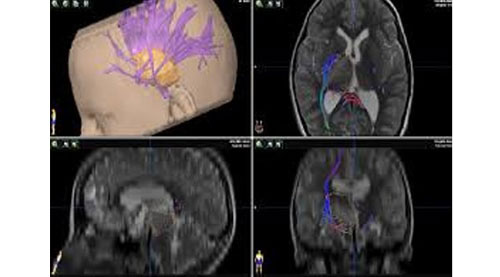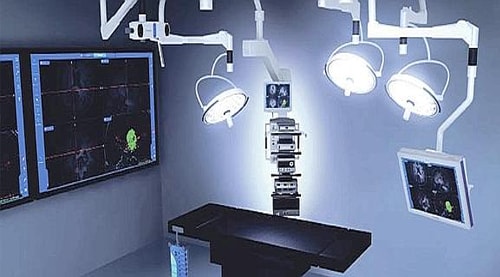Using technology similar to a global positioning system (GPS) neuronavigation gives Dr Amey P. Patankar the ability to see a patient’s anatomy in three dimensions and pinpoint a location in the brain or spinal cord with the aid of diagnostic images such as computer tomography (CT) and magnetic resonance (MR).
These images can be used with intra-operative images such as x-rays or CT scans to track the surgical procedure and instrumentation in real time, in relation to a patients’ anatomy. When performing surgery through small incisions, this allows feedback to Dr Amey P. Patankar so he can know precisely where critical structures are in relation to the surgical instruments.
The term neuronavigation is synonymous with image guided surgery (IGS), computer assisted surgery (CAS) and stereotactic navigation.


When performing surgery in the brain, the navigation system allows Dr Amey P. Patankar to tailor his approach to the structure in the brain, causing minimal disruption or retraction to surrounding tissue.
The system allows Dr Amey P. Patankar to ‘see’ through the scalp, skull and brain so trajectories can be planned.
It allows Dr Amey P. Patankar to see whether he has successfully removed the entire tumour and avoid damage to surrounding healthy tissue during deep brain stimulation (DBS).
It allows Dr Amey P. Patankar to confidently and precisely choose the exact point to place stimulators and other instruments to treat Parkinson’s disease and other neurological disorders.
Absolute precision is necessary in spine surgery because of its proximity to the spinal cord and nerves. Spinal navigation helps Dr Amey P. Patankar navigate through the bone, while avoiding damage to the adjacent neural structures.
This not only helps Dr Amey P. Patankar's perform a minimally invasive procedure, but it allows him to visualise and plan the exact incision and screw placement.
Dr Amey P. Patankar can pass instruments into the vertebrae with more confidence and a higher degree of accuracy.
